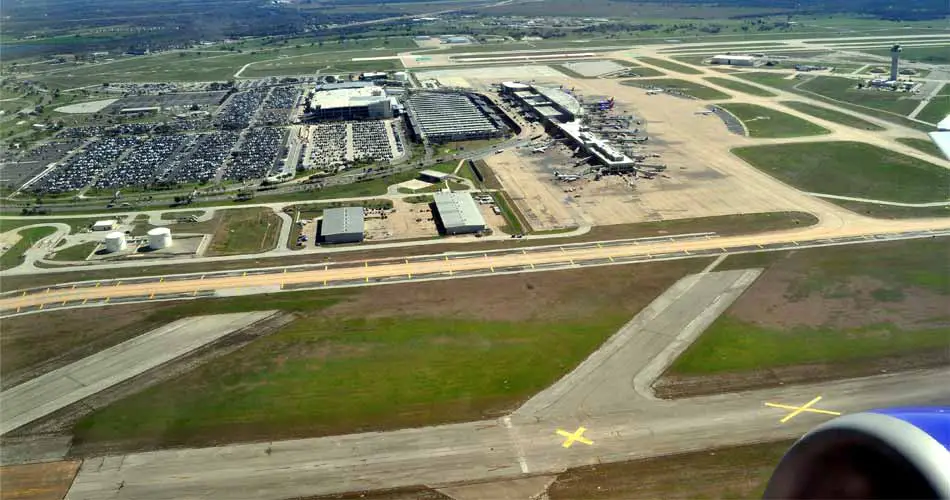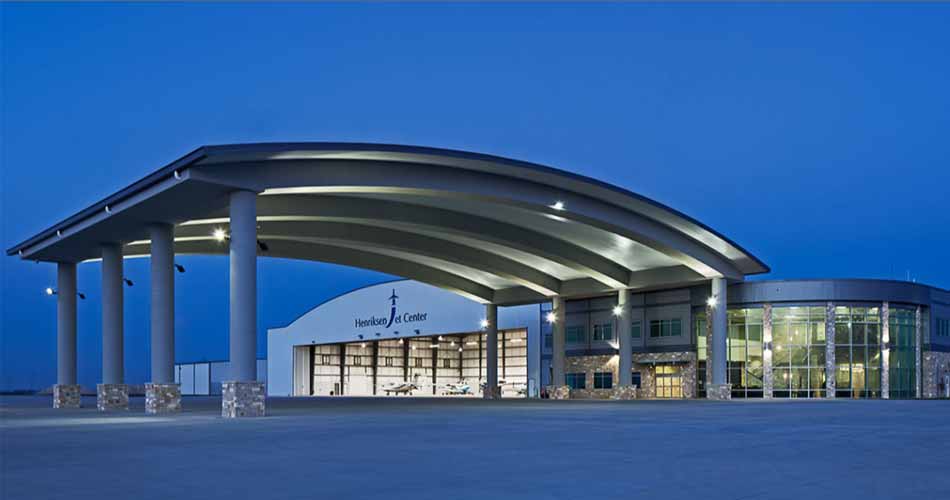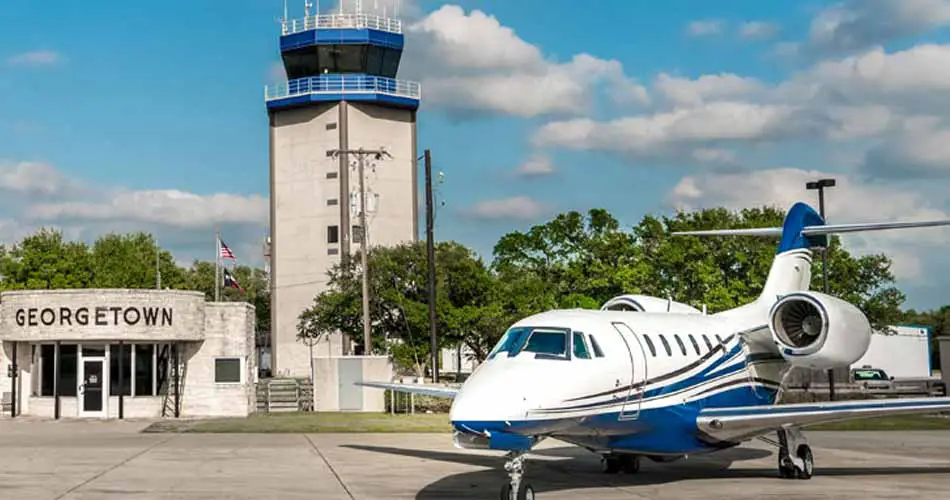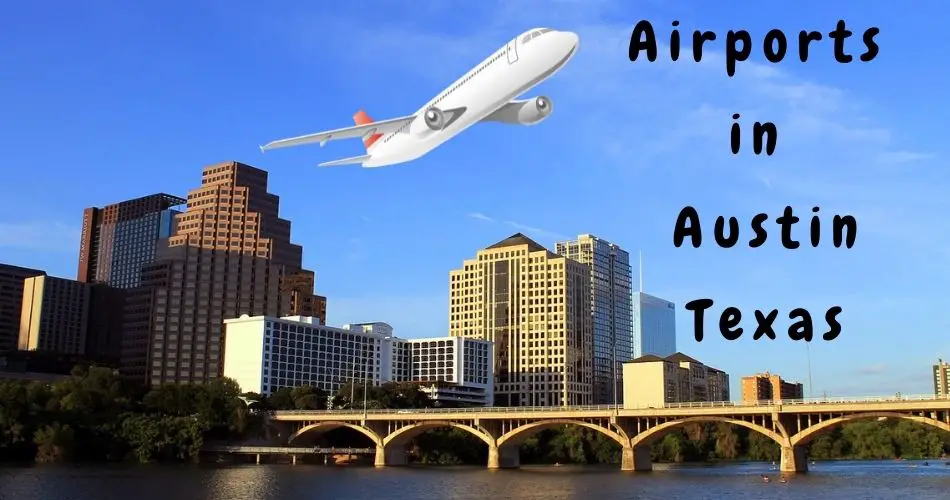There are various airports in Austin Texas however, there is only one main passenger airport named Austin-Bergstrom International Airport. Other airports include Bud Dryden Airport, Austin Executive Airport, Georgetown Municipal Airport, Breakaway Airport, Elgin Intracontinental Airport, and much more.
The airports in Austin Texas other than the Bergstrom International Airport are smaller airports. The majority of the passenger flights happen at the main airport while the small planes operate at the smaller airports.
In this article, we will explore the major airports in Austin Texas including Austin Bergstrom International Airport, Austin Executive Airport, Bud Dryden Airport, and Georgetown Municipal Airport.
Airports in Austin Texas
Table of Contents
Austin-Bergstrom International Airport (ICAO: KAUS, IATA: AUS, FAA LID: AUS)
Austin-Bergstrom International Airport is situated at an elevation of 542 ft (165m) above mean sea level (AMSL) 5 miles southeast of Downtown Austin. Among the airports in Austin Texas, this airport is the major passenger hub.
The airport is based on the site of Bergstrom Air Force Base (1942-1993) and the base was named after Captain John August Earl Bergstrom (an officer who served with the 19th Bombardment Group). Previously, Robert Mueller Municipal Airport was among the main airports in Austin Texas however, the AUS airport overtook the position.
Austin-Bergstrom Airport is the third-busiest in Texas with Dallas/Fort Worth International Airport and George Bush Intercontinental Airport leading the positions.

History of AUS Airport
The land was purchased by the city of Austin in 1942 and later handed over to the Federal Government of the United States for military purposes. It became Bergstrom Air Force Base and the name was changed to Bergstrom Army Airfield (AAF) in March 1943 to honour Captain Joh August Earl Bergstrom for his contribution to World War II. The United States Army and the United States Air Force separated in September 1947 due to which the name was again kept Bergstrom Air Force Base.
The city of Austin was in need of a new airport because the old Robert Mueller Municipal Airport was gradually outgrowing. Federal Aviation Administration (FAA), the aviation regulatory body of the United States planned to construct a joint regional airport based on Austin and San Antonio however, it was rejected due to lack of support from Austinites.
Multiple attempts to construct a new airport became unsuccessful due to various reasons. The city of Austin hired a civil engineer and airport development team to plan and design the new airport. The project of an airport in Austin with an estimated budget of $585 million was proposed and it got sufficient votes. With that, the new airport project was initiated in November 1994.
The main Runway 17R/35L was kept the same along with most of its taxiways however, the second runway 17L/35R was obliterated and a new 9,000-foot runway 17L/35R was constructed to the east of the terminal section.
The Austin-Bergstrom airport project went through various enhancement projects and then finally opened to the public on 23rd May 1999. The airport was inaugurated with a 12,250 feet (3,730m) runway making it among the United States’ longest commercial runways.
The international airport was equipped with a Barbara Jordan Passenger Terminal with an 18-gates facility covering an area of 500,000 square feet however, the number of gates was expanded to 24. All the gates except Gate 1 were featured with jet bridges. The terminal area was expanded to a total of 660,000 square feet.
Major airlines including American Airlines, Southwest Airlines, and Delta Air Lines initiated commercial flights to and from the Austin-Bergstrom International Airport.
The airport saw its terminal expand in the summer of 2015 along with enlargements in customs and immigration facilities. Likewise, 9 new gates were constructed in 2019 with an estimated budget of $350 million.

Facilities at AUS
The Austin-Bergstrom International Airport features Barbara Jordan Terminal as the airport’s main terminal constituting a total of 34 gates. Among the 34 gates, 6 are capable of accommodating international flights. You can find restaurants, food concessions, and other facilities at the terminal.
Low-cost carriers Frontier Airlines and Allegiant Air operate via the secondary terminal known as the South Terminal.
Austin-Bergstrom International Airport Runway Information
| Runway Designation | Dimension | Pavement |
| RWY 18R/36L | 12,250 ft by 150 ft (3,730 m by 46 m) | Concrete |
| RWY 18L/36R | 9,000 ft by 150 ft (2,700 m by 46 m) | Concrete |
Austin-Bergstrom International Airport Future Project
The airport authority is planning a huge expansion of the AUS airport with aim of serving over 31 million passengers by 2040. The Barbara Jordan Terminal will be optimized and a new midfield concourse is planned to meet the target.
In addition, two new taxiways will be built to assist the increase in aircraft movements. The Austin-Bergstrom International Airport 2040 masterplan was finalized in 2019 but it was delayed due to the adverse impact of the COVID-19 pandemic. With that, a new strategy was launched in July 2021 according to which the project will initiate depending upon the effects of the pandemic.

Airlines Operating at AUS
| AIRLINES | OPERATING GATES |
| Aeromexico | Gates 1,2,3,4,5,6 |
| Air Canada | Gates 22,32,33,34 |
| Alaska Airlines | See Flight Info Display for a gate assignment |
| American Airlines | Gates 23,24,26,28,30 |
| British Airways | Gates 2,3,6 |
| Delta Air Lines | Gates 7,8,9,10 |
| Hawaiian Airlines | See Flight Info Display |
| JetBlue Airways | Gate 12 |
| JSX Airline | Gates 2,3,6 |
| Southwest Airlines | Gates 14,15,16,17,18,19,20,21 |
| Spirit Airlines | Gate 11 |
| Sun Country Airlines | See Flight Info Display |
| United Airlines | Gates 25,27,29,21,33 |
| Vacation Express | See Flight Information Display |
| WestJet | See Flight Information Display |
| Allegiant Air | Ticket Counters S1,S2,S3 |
| Frontier Airlines | Ticket Counters S1,S2,S3 |
| Atlantic Aviation Services | Fixed Base Operations (FBOS) |
| Million Air Austin | Fixed Base Operations (FBOS) |
| Signature Flight Support | Fixed Base Operations (FBOS) |
Busiest Domestic Destinations from AUS
| DESTINATION | OPERATING AIRLINES |
| Dallas/Fort Worth, Texas | American Airlines |
| Denver, Colorado | Frontier Airlines, United Airlines, Southwest Airlines, Spirit Airlines |
| Los Angeles, California | United Airlines, Delta Airlines, Southwest Airlines, American Airlines, Spirit Airlines |
| Atlanta, Georgia | Delta Air Lines, Spirit Airlines, Frontier Airlines, Southwest Airlines |
| Phoenix-Sky Harbor, Arizona | American Airlines, Southwest Airlines |
| Las Vegas, Nevada | Allegiant Air, Spirit Airlines, Southwest Airlines, Frontier Airlines |
| Charlotte, North Carolina | American Airlines |
| Orlando, Florida | Spirit Airlines, Frontier Airlines, Southwest Airlines, American Airlines |
| Houston-Intercontinental, Texas | United Airlines |
| Chicago-O’Hare, Illinois | American Airlines, United Airlines, Spirit Airlines, Southwest Airlines |
AUS Airport Technical Information
| ICAO Code | KAUS |
| IATA Code | AUS |
| FAA LID | AUS |
| Elevation | 542 ft / 165 m AMSL |
| Area | 4,242 acres (1,717 ha) |
| Runway | 18L/36R (12,250 ft by 150 ft) 18R/36L (9,000 ft by 150 ft) |
Austin Executive Airport
The Austin Executive Airport, one of the airports in Austin Texas, is a controlled airfield located near downtown Austin. It is a first-class business and general aviation facility and a gateway to Central Texas. It is a public-use airport situated at an elevation of 620 ft (189m) above mean sea level (AMSL).

The Austin Executive Airport was opened in 2011 with funding from Ron Henrikson (owner of Houston Executive Airport). The airport also serves as a general aviation alternative to the Austin-Bergstrom International Airport (AUS).
The airport covers an area of 585 acres and features two asphalt runways; Runway 13/31 and Runway 16/34. The dimension of Runway 13/31 is 6,025 feet by 100 feet (1,836 m by 30 m) while Runway 16/34 is 1,550 feet by 25 feet (472 m by 8 m).
Technical Information
| ICAO Code | KEDC |
| IATA Code | – |
| FAA LID | EDC |
| Elevation | 620 ft / 189 m AMSL |
| Area | 585 acres (237 ha) |
| Runway | 13/31 (6,025 feet by 100 feet) 16/34 (1,550 feet by 25 feet) |
Small Airports near Austin TX
Georgetown Municipal Airport
The Georgetown Municipal Airport is located in Williamson County, Texas which is just 3 miles north of Georgetown. It is among the airports in Austin Texas categorized as a reliever airport (an airport built to provide relief or additional capacity to the primary airport).

The airport covers an area of 640 acres and features two asphalt runways; Runway 11/29 and Runway 18/36. The dimension of runway 11/29 is 4,100 ft by 75 ft (1,250 m by 23 m) and that of runway 18/36 is 5,000 ft by 100 ft (1,524 m by 20 m).
| ICAO Code | KGTU |
| IATA Code | – |
| FAA LID | GTU |
| Elevation | 790 ft / 241 m AMSL |
| Area | 640 acres (260 ha) |
| Runway | 11/29 (4,100 ft by 75 ft) 18/36 (5,000 ft by 100 ft) |
Bud Dryden Airport
Bud Dryden Airport is also among the airports in Austin Texas situated at an elevation of 500 ft (152m) above mean sea level (AMSL). It is a private-use airport that requires permission before landing.
The airport is just 6 miles Southeast of Austin, Texas, and features a runway 1/19 with dimensions 2300 ft by 60 ft (701 m by 18 m).
| ICAO Code | TX05 |
| IATA Code | – |
| FAA LID | – |
| Elevation | 500 ft (152m) AMSL |
| Runway | 1/19 (2300 ft by 60 ft) |
There are various other smaller airports in Austin Texas however, many of them are not technically located in Austin.
Some nearer airports in Austin Texas are listed below.
Taylor Municipal Airport
Chan-C Airport
Skye Dance Airport
Flying Armadillo Field
Lockhart Municipal Airport
San Marcos Regional Airport
New Braunfels National Airport
Grosser Airport
Byram Ranch Airport
Lakeside Beach Airport
Breakaway Airport
Flying H Ranch Airport
Hoopes Ranch Airport
International Airports near Austin Texas
Some major international airports near Austin Texas are listed below.
- Dallas/Fort Worth International Airport
- George Bush Intercontinental Airport
- San Antonio International Airport
- Corpus Christi International Airport
How many airports are in Austin Texas?
Austin, Texas has three airports. Austin-Bergstrom International Airport (AUS) is the largest and busiest, functioning as a major hub for American Airlines and providing flights to various destinations worldwide. Austin Executive Airport (EDC), located northeast of downtown, caters to private and corporate aircraft with limited commercial flights to select Texas and Mexico destinations. Austin Municipal Airport (T12), situated south of downtown, is a general aviation airport primarily utilized for small planes and recreational aviation.
What airport do you fly into for Austin TX?
The main airport for arrivals in Austin, TX is Austin-Bergstrom International Airport (AUS). As the city’s largest and busiest airport, it provides flights to destinations around the globe. Situated only 6.4 miles from downtown Austin, it offers diverse transportation options for convenient travel to and from your destination.
What is Austin’s main airport?
Austin’s main airport is Austin-Bergstrom International Airport (AUS).
What is the 3 letter airport in Austin Texas?
The 3-letter airport code for Austin-Bergstrom International Airport in Austin, Texas is AUS.





